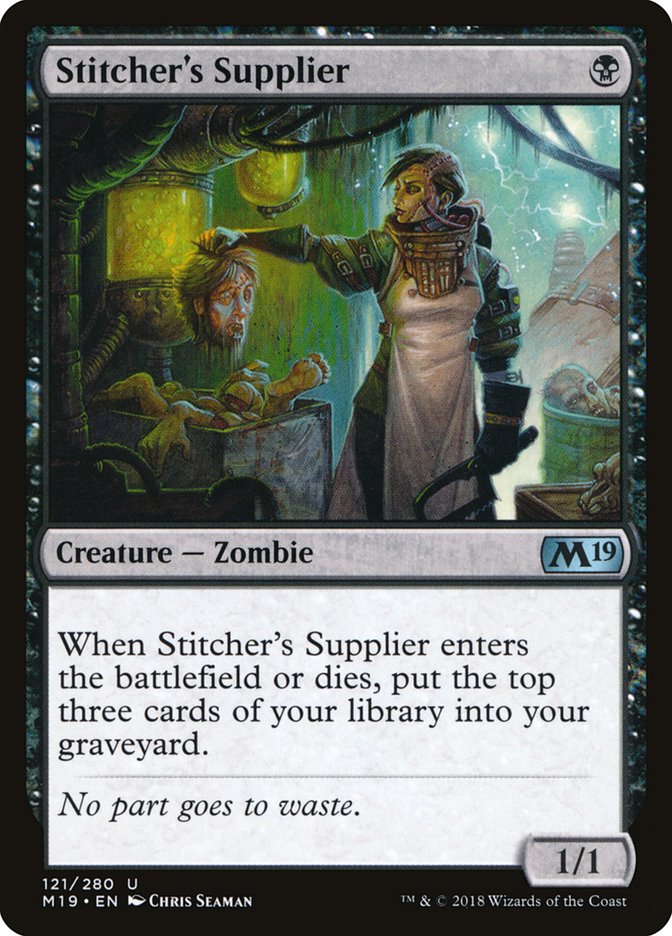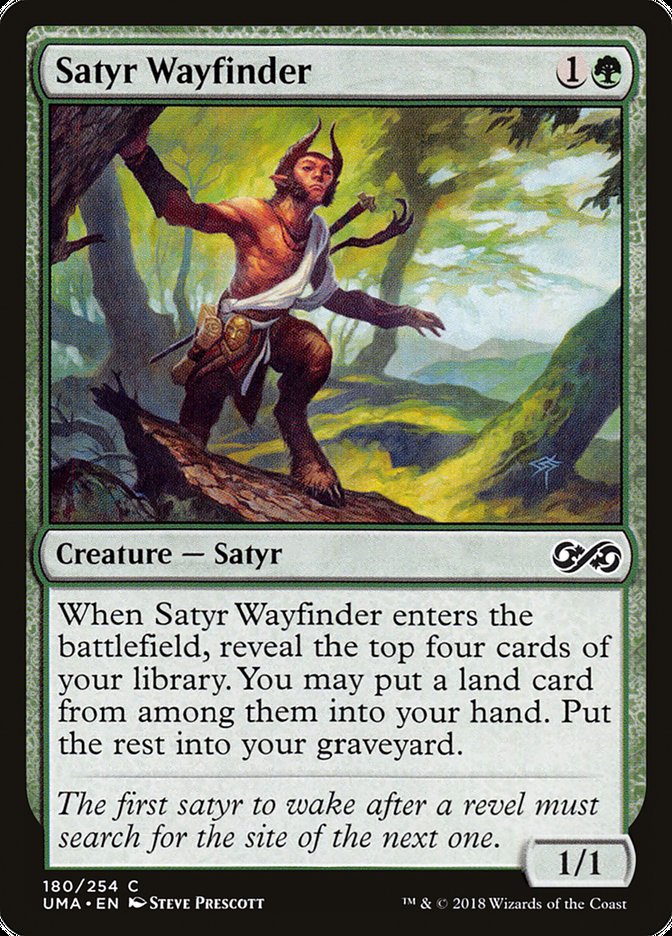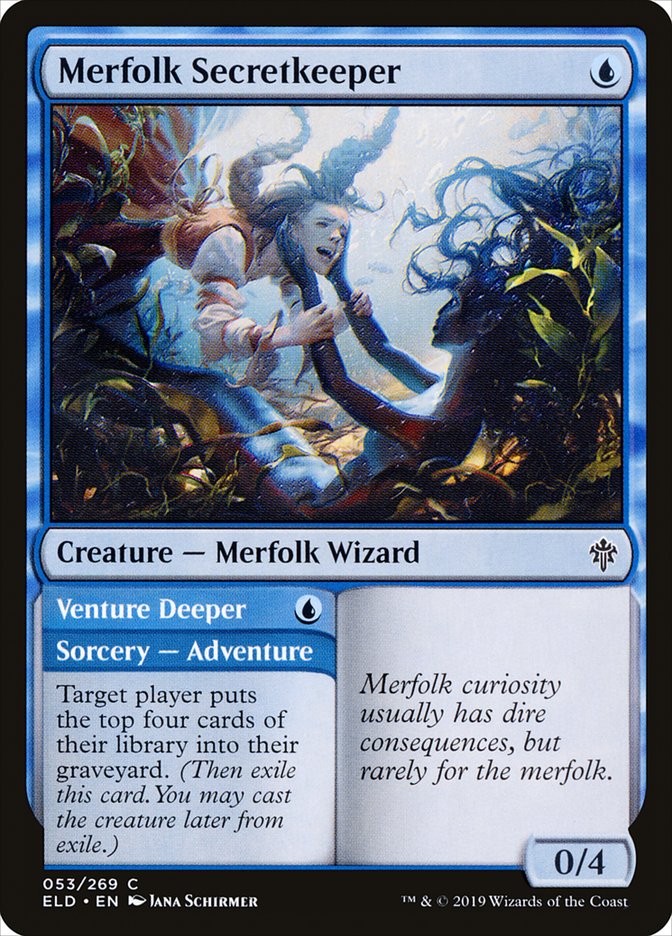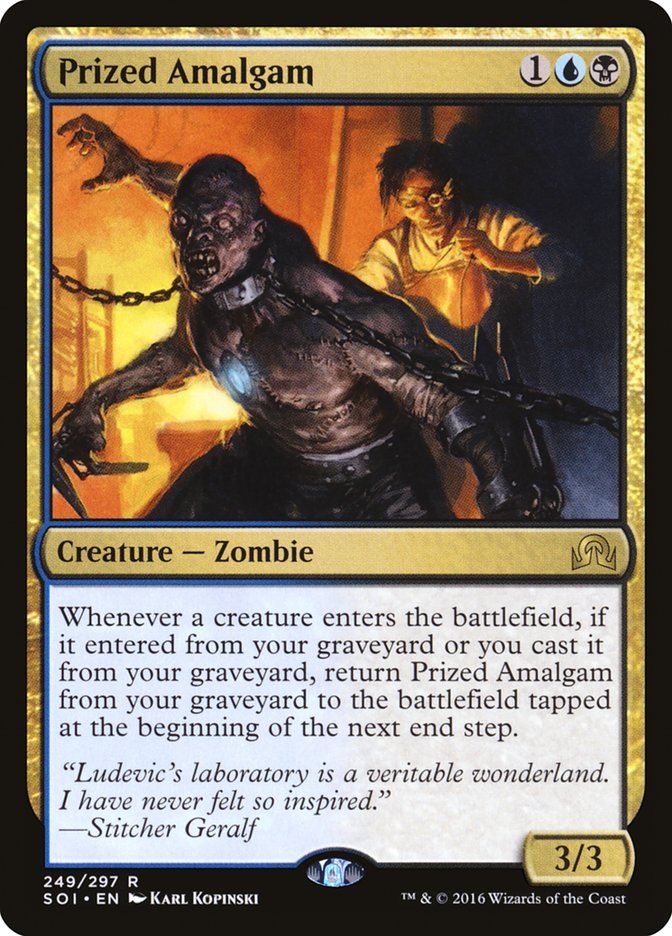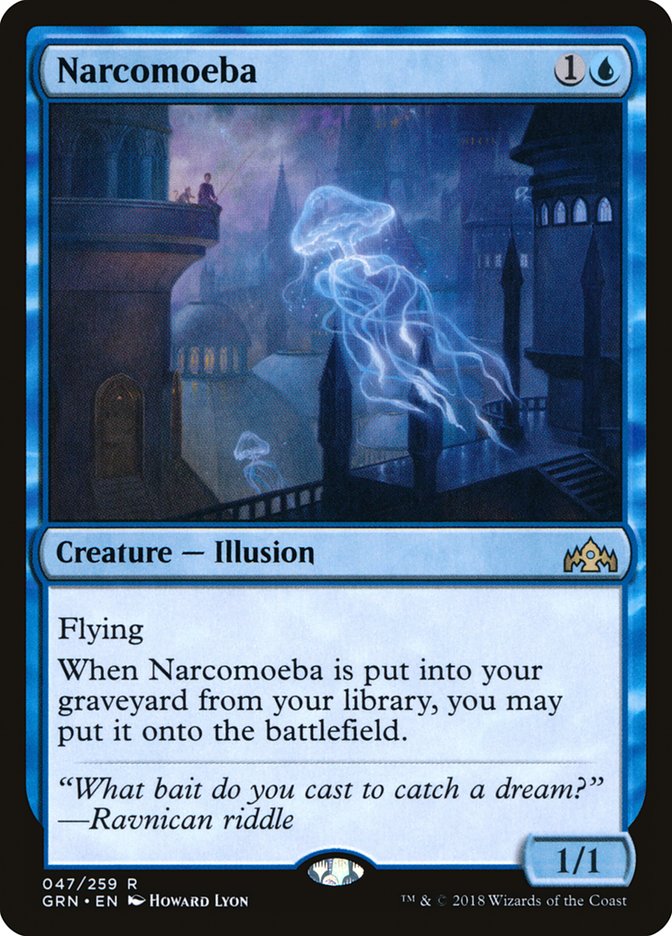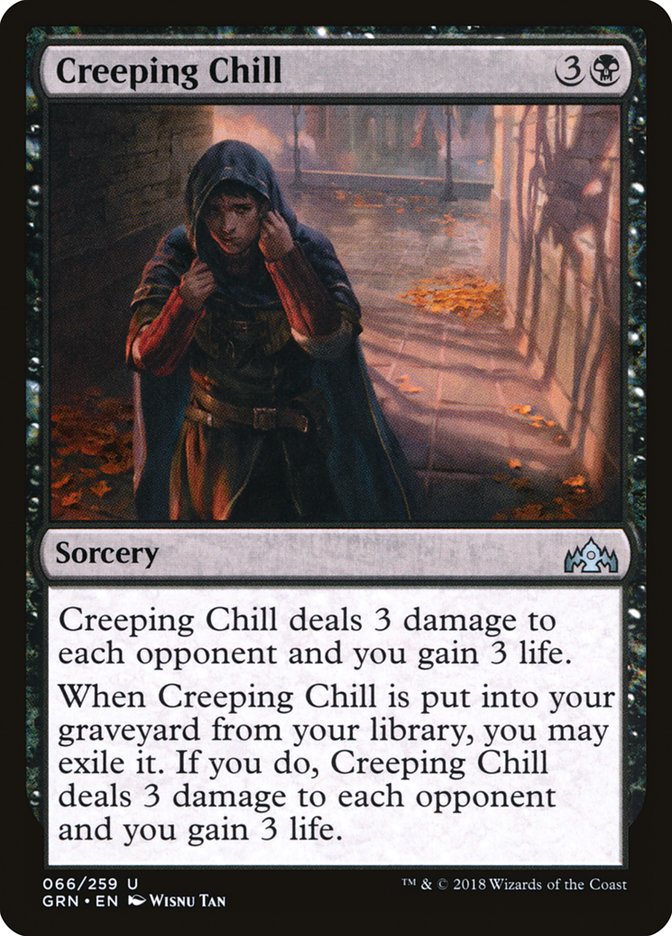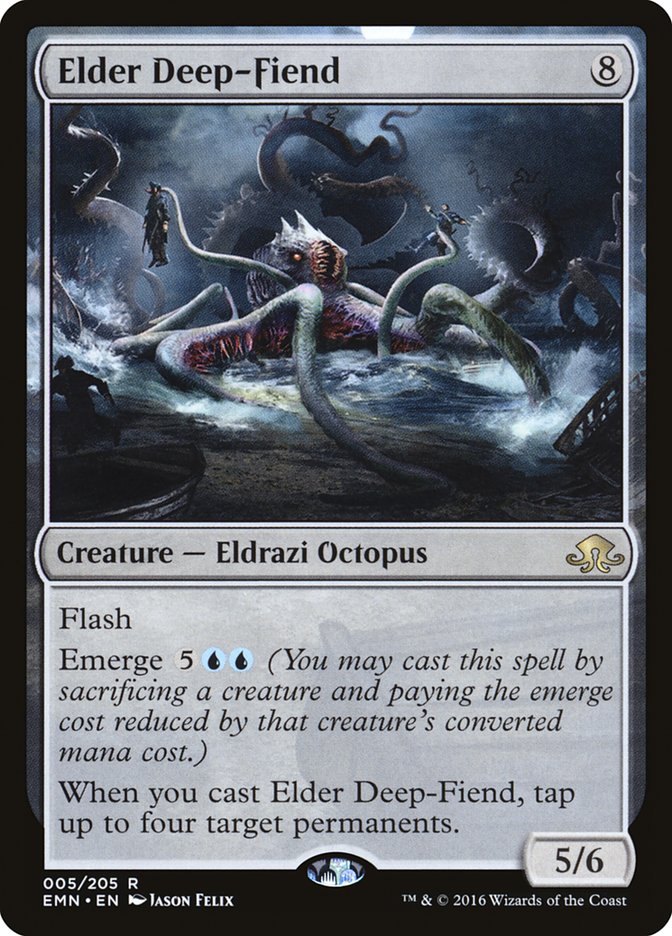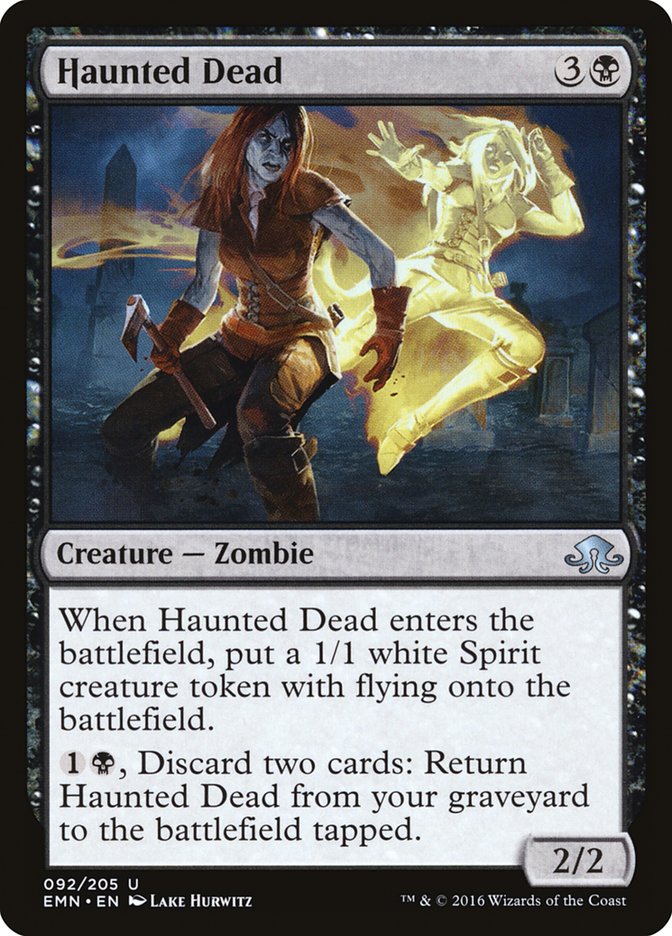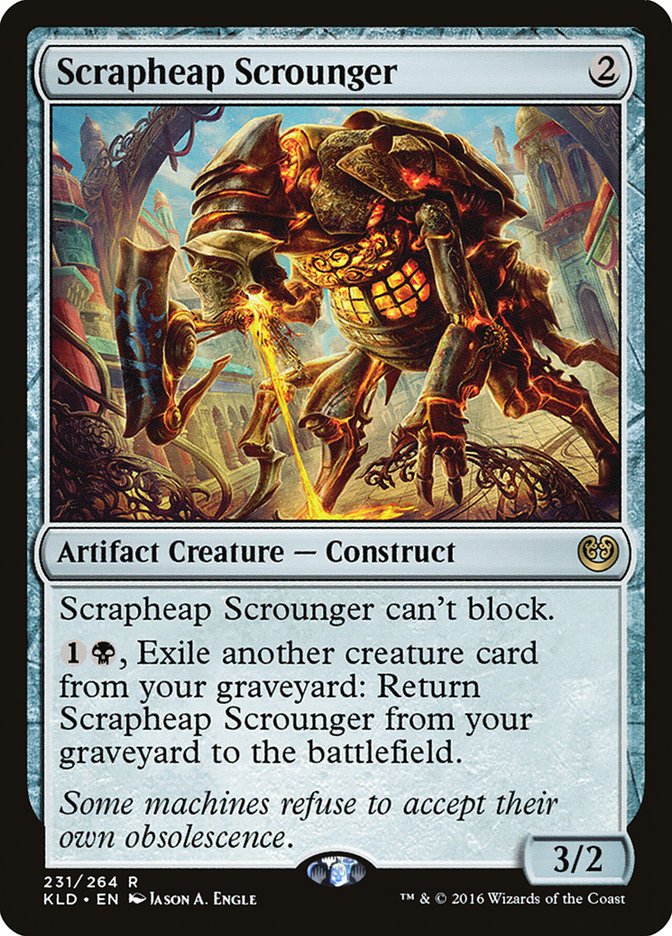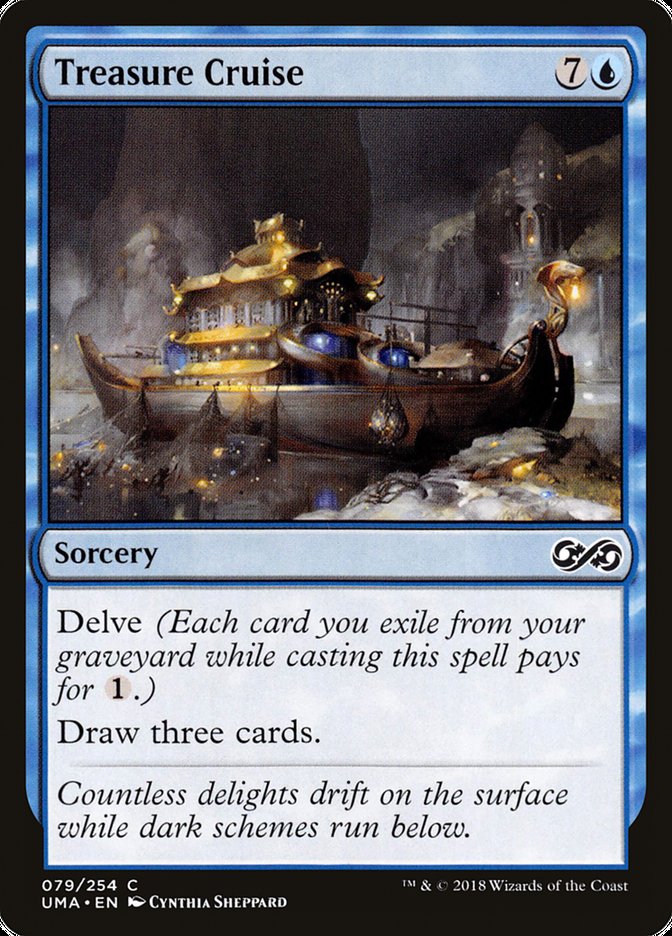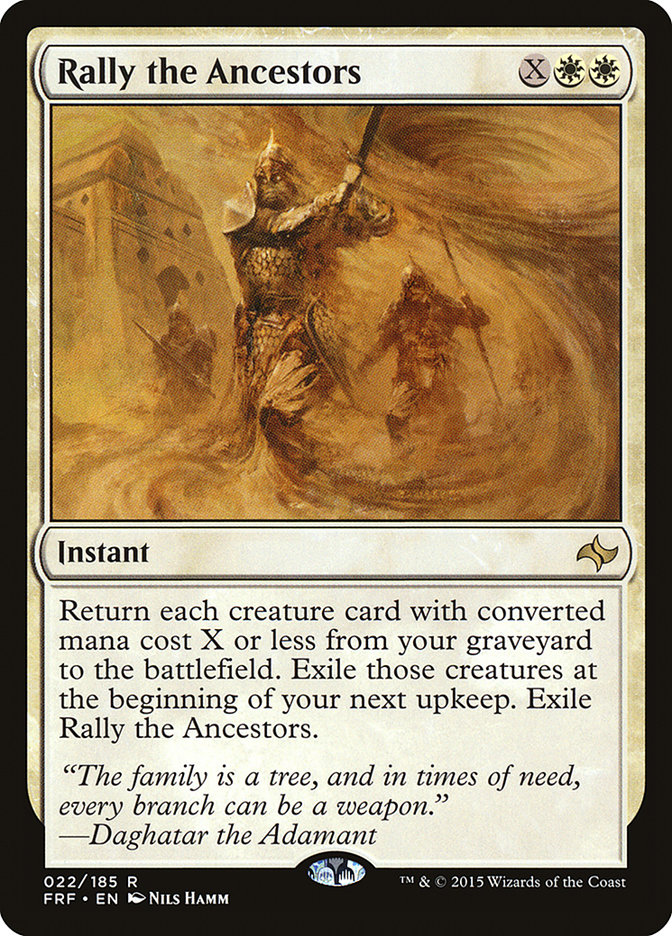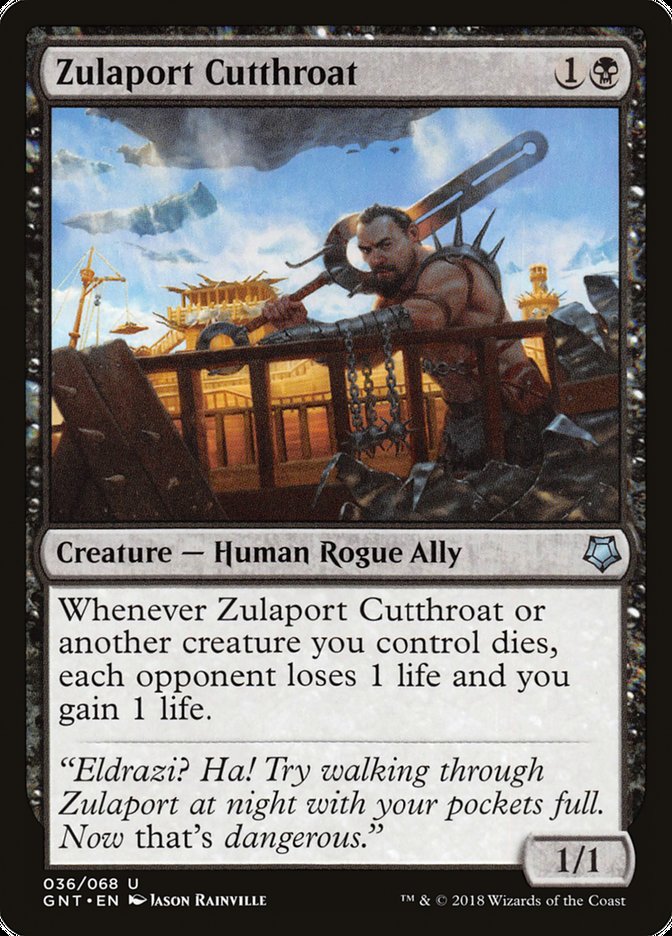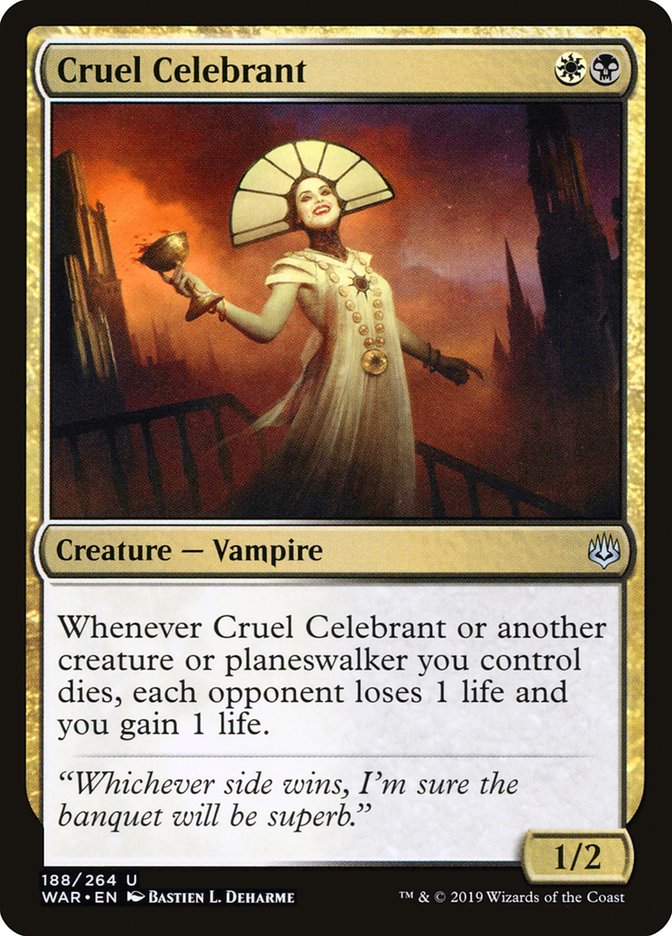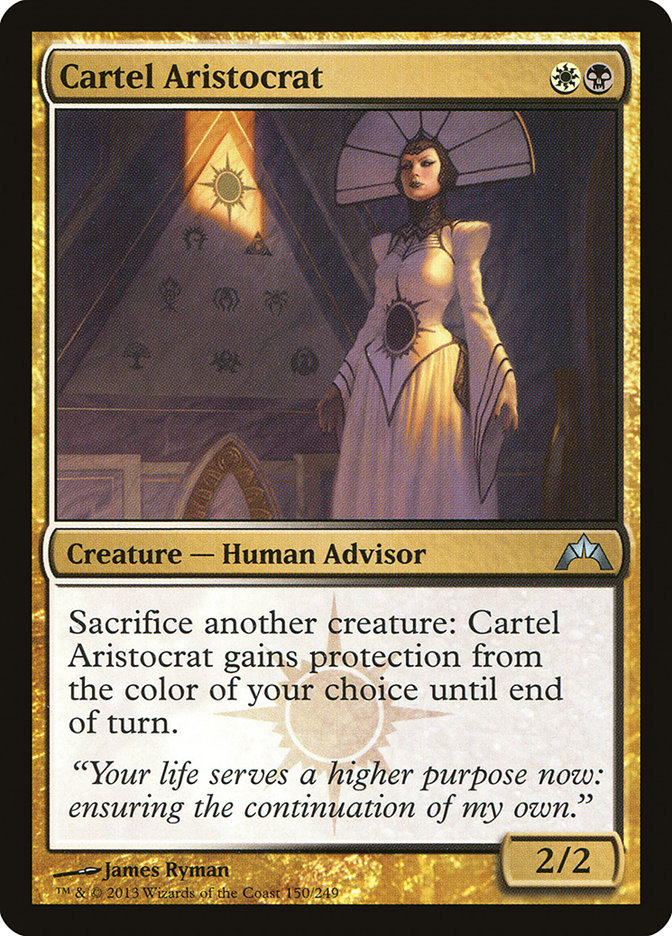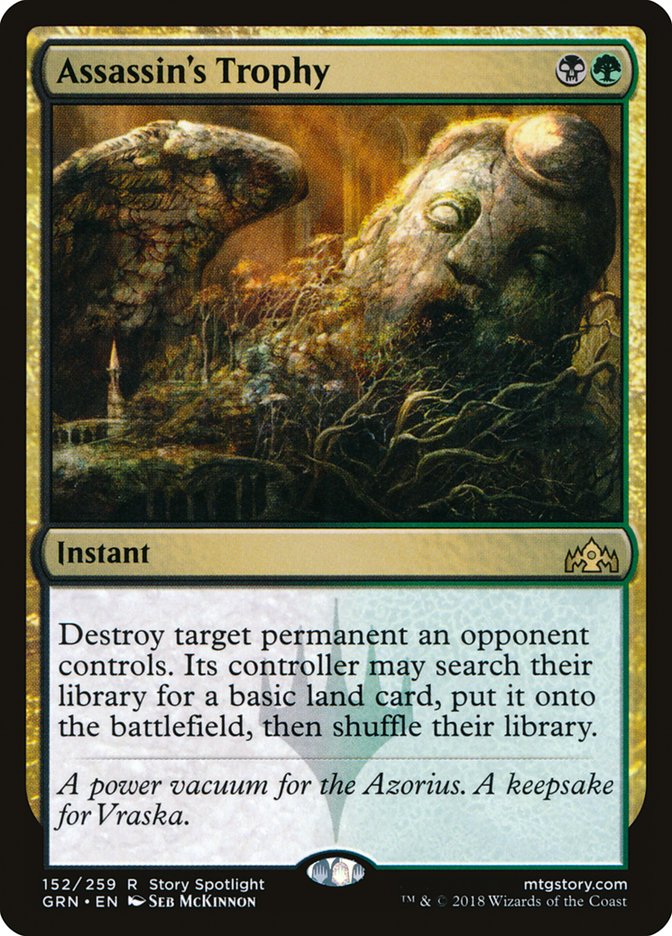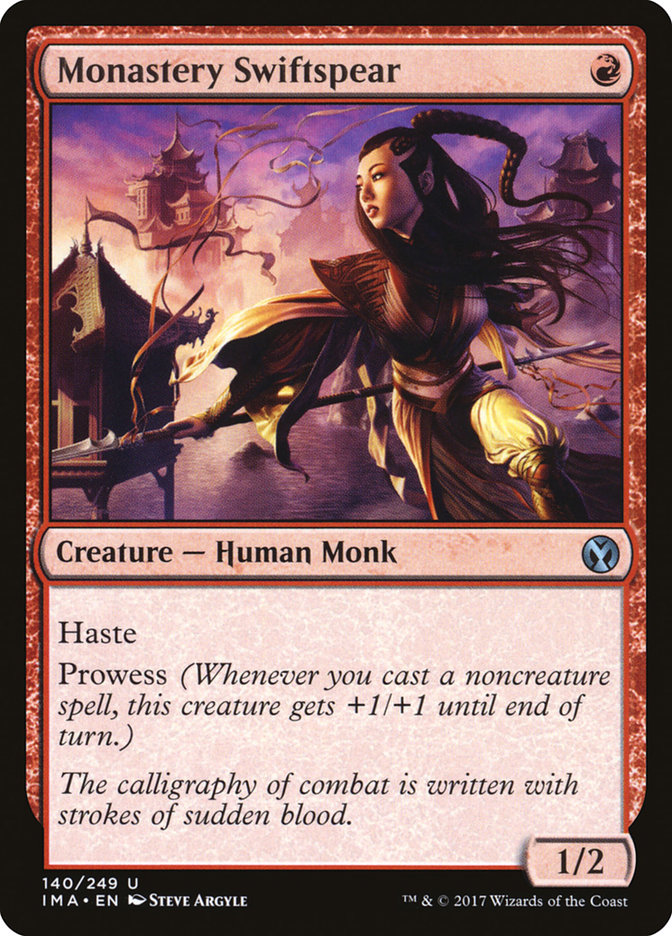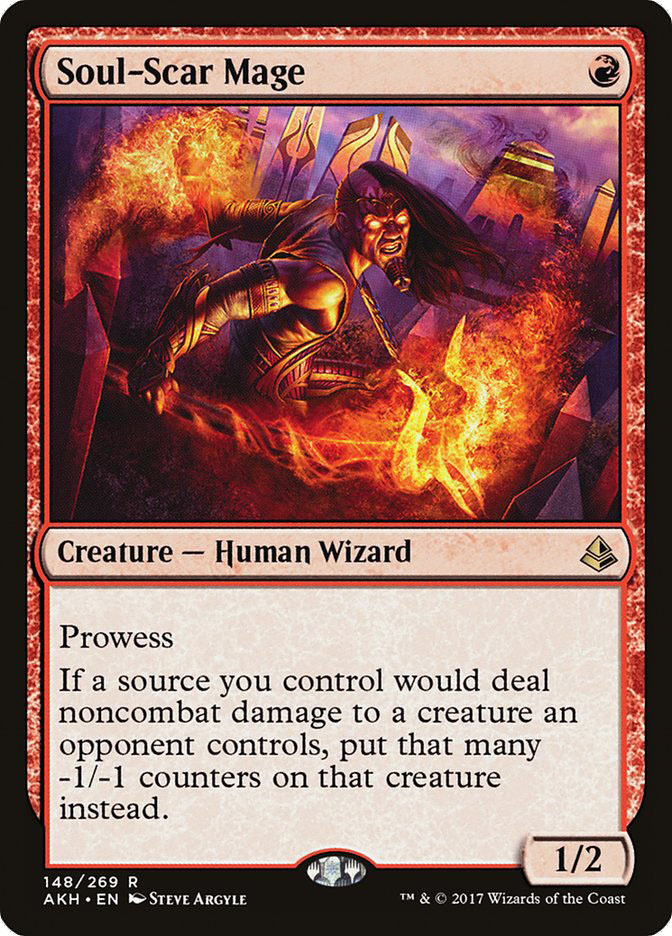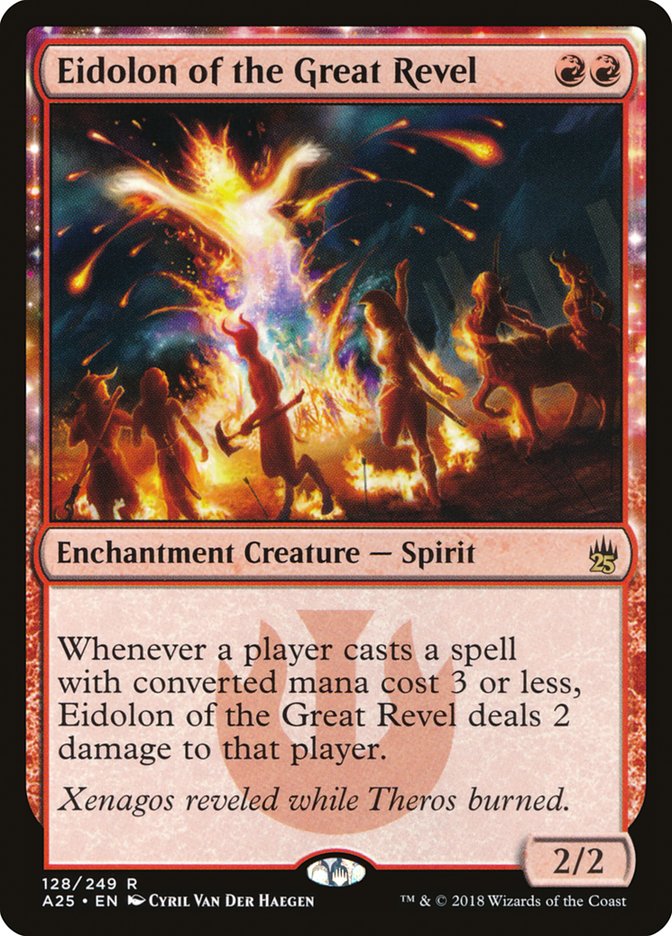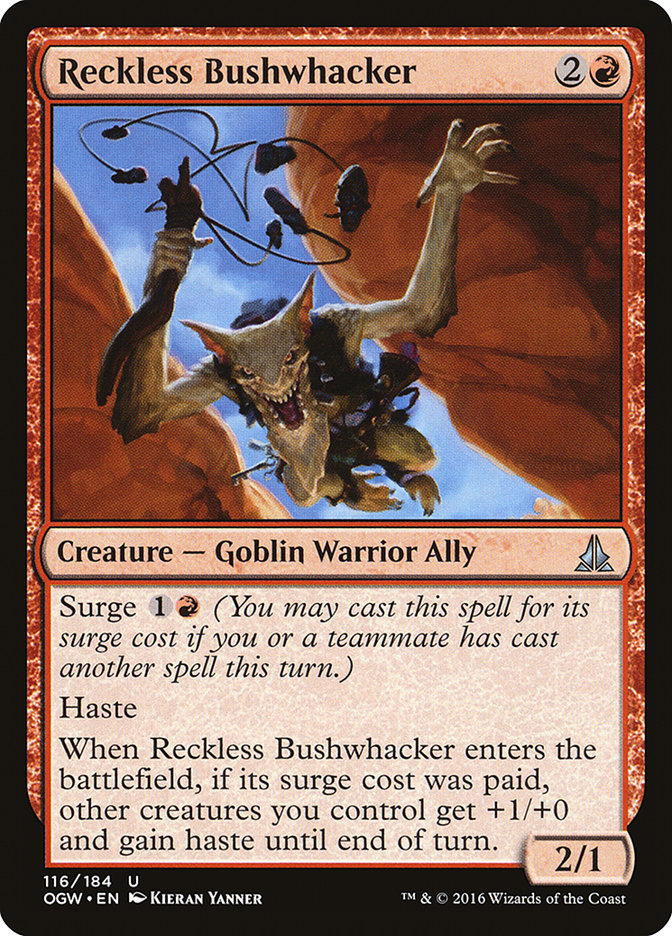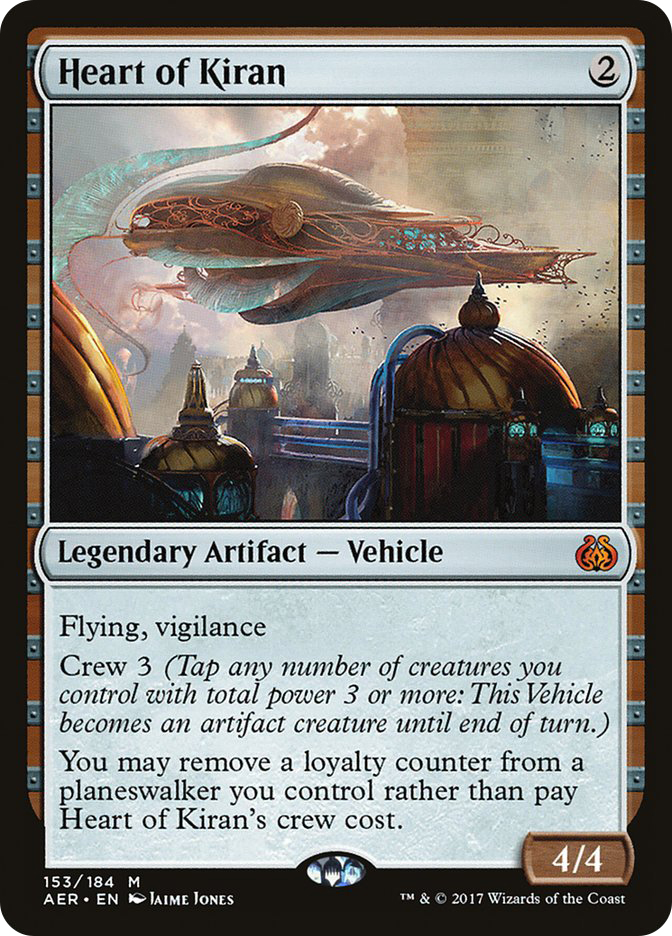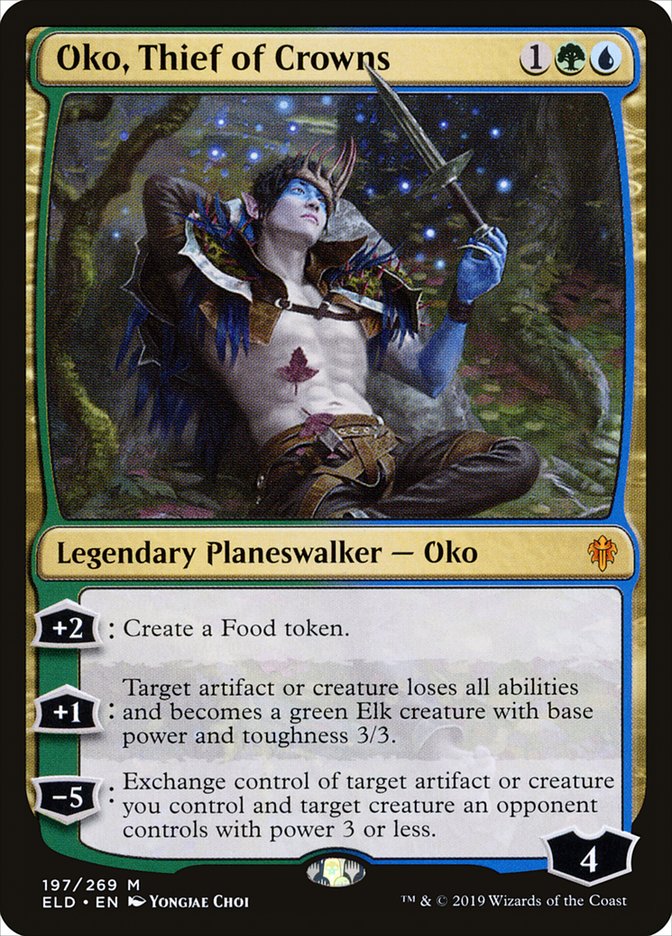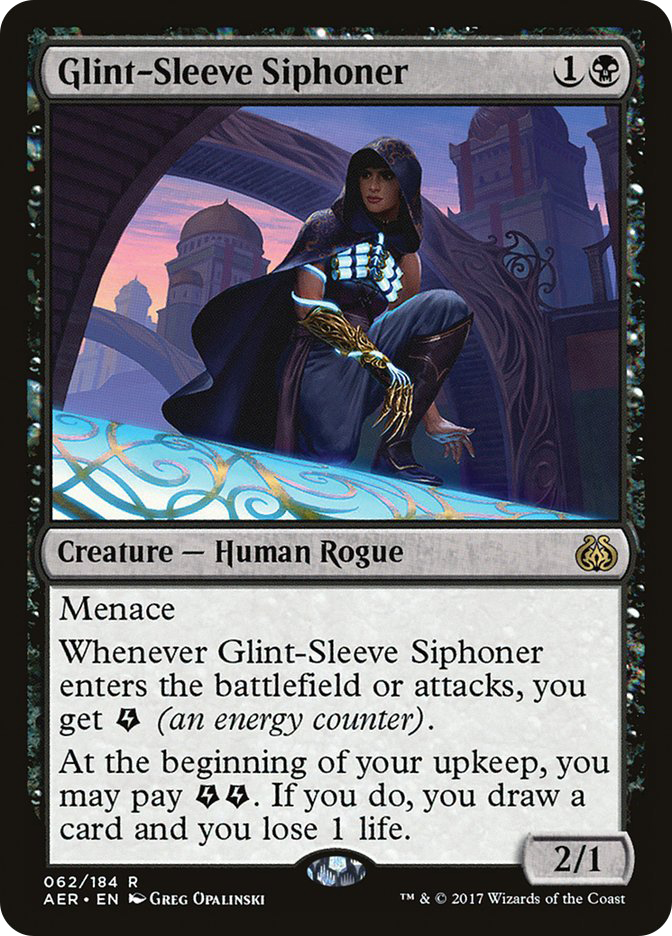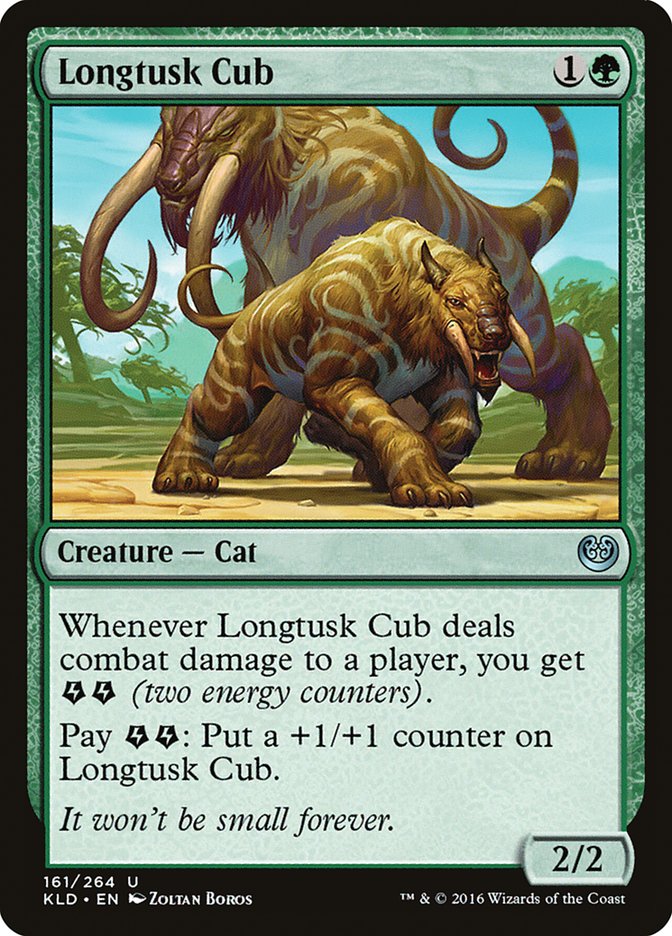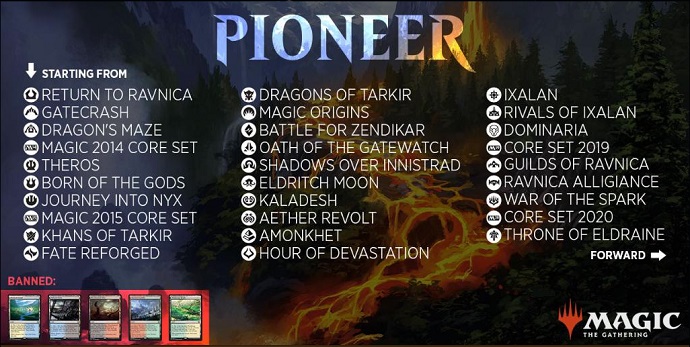
They say a picture is worth 1000 words, which is good, because when it comes to Pioneer I’m going to need every last word I can get my hands on.
Briefly, in case you were so preoccupied with the Field of the Dead ban, fixated on being upset about how many of your permanents are getting turned into Elks, or just plain busy living under a rock, Pioneer is Magic’s newest non-rotating competitive format, spanning every Standard legal set from Return to Ravnica to Throne of Eldraine and beyond.
The only cards on the initial Banned List are the cycle of fetchlands from Khans of Tarkir, which leaves us with an amazingly deep card pool, fundamentally different manabases from what we’re used to in Modern, and quite a bit of work ahead of us as we venture into unknown, yet familiar territory.
This small Banned List is perhaps the single most exciting thing about Pioneer to me. It’s not just a new format full of new possibilities; it’s a new format simply asking to be broken.
I won’t go into every card that had been banned from its respective Standard environment, in part because that would be an entire article in and of itself, but also because it wouldn’t even come close to doing the potential of the format justice. Pioneer isn’t just going to be a format about dusting off old broken Standard decks to see what winds up being dominant; as the name suggests, it’s going to be about discovering new things and innovating upon old designs.
Before we get to pioneering Pioneer on a deck-by-deck level, though, I think it’s of the utmost importance that we are able to first define for ourselves what kinds of things we can accomplish, both in the terms of playing fair and playing unfair. Without these pillars of the format to give us context, it’s hard to even discuss how we should go about exploring the entirety of our options, let alone start brewing.
As much as I normally love to mince words, there really is a lot to cover, so let’s get down to the fun stuff, shall we?
The Unfair
When I talk about a deck being unfair, generally what I’m implying is that some way, somehow, my deck is finding a way to do things either for no mana or way less mana than it’s supposed to. One of the best ways historically to accomplish this in the past has been to abuse the graveyard and Pioneer is no different.
Like we have seen time and time again in Modern, given the ability to fuel your graveyard, it’s only a matter of time until something comes along to abuse it. While Pioneer may lack old favorites like Bloodghast and Vengevine, or the entire dredge mechanic for that matter, there’s still quite a bit that can be done there.
These three familiar faces are all 100% Pioneer-legal, though they’re most known for their work in Modern thus far. Admittedly on their own these cards are a little lackluster without being backed up by the likes of Conflagrate, Bloodghast, or Life from the Loam, but this is Pioneer and we can make our own solutions.
Long ago, Elder Deep-Fiend was one of the cards players were seeking to break the most. What wound up being one of the most successful uses of the Eldrazi Octopus was to play it in conjunction with self-mill cards, Haunted Dead to emerge from, and Prized Amalgam to leverage the Elder Deep-Fiend’s cast trigger into a quick clock.
With added members of the cast like Scrapheap Scrounger, Creeping Chill, and Narcomoeba, the existence of a recursive graveyard menace isn’t too far-fetched for me to see and that’s only the beginning.
Did you forget about these?
In my mind, delve is indisputably the best cost reduction effect ever printed. Treasure Cruise and Dig Through Time are both banned in Modern andLegacy, each basically sporting a mana cost of whatever colored symbols are on the card.
While Pioneer lacks things like Thought Scour, fetchlands, and the plethora of cantrips that made Cruise and Dig so effortless to cast in Modern and Legacy, that doesn’t mean these cards aren’t still absolutely bonkers. Any deck that can effectively fuel its graveyard gets access to some of the most powerful spells ever printed. Even if we aren’t talking Treasure Cruise, Murderous Cut is basically a free space for any graveyard deck in the format.
Of course, if grinding the opponent out of the game from the graveyard sounds trivial and boring to you, there’s still the old Standard scourge of Rally the Ancestors around to do all the hard work for you. While the Standard version may have relied on a four-color manabase we can’t replicate, we simply don’t have a need to given so many self-mill options in just three colors.
Not only do we have all the graveyard enabling we could ask for, we also have access to more Blood Artist effects than we had the last time thanks to War of the Spark. I’ve already seen players posting lists that go as deep as playing Walking Ballista and Hangarback Walker with Midnight Reaper and Grim Haruspex that cycle through their decks, draining you out in the process of finding copies of Rally the Ancestors. If that’s not unfair Magic, I’m not sure what is.
Outside of the graveyard, there really is only one other unfair thing to be doing, but it still might just wind up being the best of all of them.
As blocks go, Kaladesh is probably the most powerful one legal in Pioneer and that’s a tough title to take. A big part of that power comes from the energy cards, none more prolific in inducing misery for its tenure in Standard than Aetherworks Marvel.
I foresee Marvel being like the Show and Tell of Pioneer, a card that enables an entire deck on its own by being able to use the most powerful spells in the format far ahead of schedule. In this case, Ulamog, the Ceaseless Hunger and Emrakul, the Promised End are likely still the biggest things you can cast. However, I’m unsure if that’s actually how Marvel will choose to construct itself.
One of the downsides of Marvel decks is how linear they are. Their best draws rely on resolving a four-mana artifact while also having the requisite energy to spin the wheel immediately. If enough decks are able to pack interaction, it seems like it could be respected out of the format, but until we see what respect looks like in Pioneer, it’s definitely on my radar.
The Fair
I know I said that the unfair stuff was the fun stuff, but come on, let’s be real with each other here – fair Magic is the really fun stuff. Of course when I say fair Magic, that doesn’t mean that we won’t be doing our opponents dirty somehow, just that in terms of what we’re doing, we’re trying to out-value or outpace our opponents with efficiency of our own cards. By rule of thumb, we’re putting our spells on the stack one mana at a time, just like everyone else.
So, when it comes to Pioneer, what’s the law, you ask? Well, let’s just ask the sheriffs.
At the very heart of Pioneer, and likely the thing that will set it apart from every other format, are Fatal Push and Thoughtseize carrying the torch of interaction. Plainly put, if you want to interact with your opponent proactively in any other fashion, you really can’t because the tools don’t exist.
Clean, cheap answers like Lightning Bolt, Path to Exile, and Swords to Plowshares are the backbone of their respective formats because of their ruthless efficiency. Pioneer is a lawless land conquered by only this pair of guns who dared to accept the job. If you want to talk about the next-best options for good removal spells, the short list is:
The ramifications of this for the rest of Pioneer are huge to say the least. Mana accelerants like Llanowar Elves and Elvish Mystic are largely free to steal the play from any midrange decks they oppose, Mono-Red and Mono-White strategies full of one-drop creatures can almost guarantee themselves that they’ll be able to trade up on mana in the early-game, and the midrange decks will have to find some way to catch up before things snowball out of hand.
Mono-Red especially has such a wealth of weapons in its arsenal that it feels almost impossible to construct without knowing what you’re going to be sitting down across from. As it turns out, when Mono-Red is a viable deck for the better part of five years, it starts to get difficult to make cuts among all the Goblin Chainwhirlers and Rampaging Ferocidons.
Looking at the state of clean removal and the pressure on sweepers, though, I wouldn’t be surprised if we saw Mono-Red try to lean into its most mana-efficient configurations rather than become more of a Burn deck in the early stages of the format. It’s been a while since we have seen a blitz deck be the most prevalent red deck, but when it is, it’s extremely punishing.
How can midrange decks push back against the aggressive decks? By assembling some sort of roadblock that the aggressive deck’s Shocks and Lightning Strikes can’t just deal with.
Probably the card that has gained the most stock since its time in Standard, Heart of Kiran is poised to be the biggest threat that the aggressive decks of the format will have to push through. It should go without saying, but the fact that War of the Spark introduced so many cheap, high-loyalty planeswalkers makes Heart of Kiran the premier midrange threat in my mind.
Curving Heart of Kiran into any three-mana planeswalker is an absurdly powerful start that is bound to send any opponent on the backfoot. It may sound like hyperbole, but I’m of the opinion that Heart of Kiran is akin to Stoneforge Mystic in the dynamic of Pioneer. It is not only a kill condition, but also a means to stopping your opponent in their tracks. When cast on Turn 2, it makes the game entirely different on both sides of the table, allowing normally reactive decks to get on the aggressive and put their opponent under pressure.
That doesn’t exactly mean that I expect every deck to play Heart of Kiran, though, as there are competing packages of threats that each have their edges over the others.
Take Golgari for example. Primed with the best removal in the format, Golgari doesn’t have as much of a need for a card like Heart of Kiran when they can play a powerful and synergistic energy shell that other colors don’t have access to. Liliana, the Last Hope plus Heart of Kiran is certainly good but doesn’t exactly cover the same ground as Longtusk Cub and Winding Constrictor, or help you fight control decks like Glint-Sleeve Siphoner can.
There are also extremely compelling reasons to avoid running unnecessary noncreature spells entirely, like Collected Company so that you could enable Spell Queller or Reflector Mage to their maximum potential. The key over time will be to judge the power level of these different strategies as they emerge, identify the key cards they are trying to bring to the forefront, and evaluate how they line up against the format.
What’s Next?
As much as I could go on forever about the possibilities of Pioneer and how all of these familiar pieces can fit together, I’m going to leave this where it is for now and give the format more time to mature and for our pillars to become decks more than synergies. After all, the format is only a few days old, and I’m sure by the time we see our first Pioneer results from Magic Online and upcoming Grand Prix, we’ll be seeing things we never even imagined were possible today. The most important thing as we enter this new frontier together as Pioneers is to go out there with the knowledge to be prepared for what you might see.
That’s enough talk from me. Let’s play some Magic!





